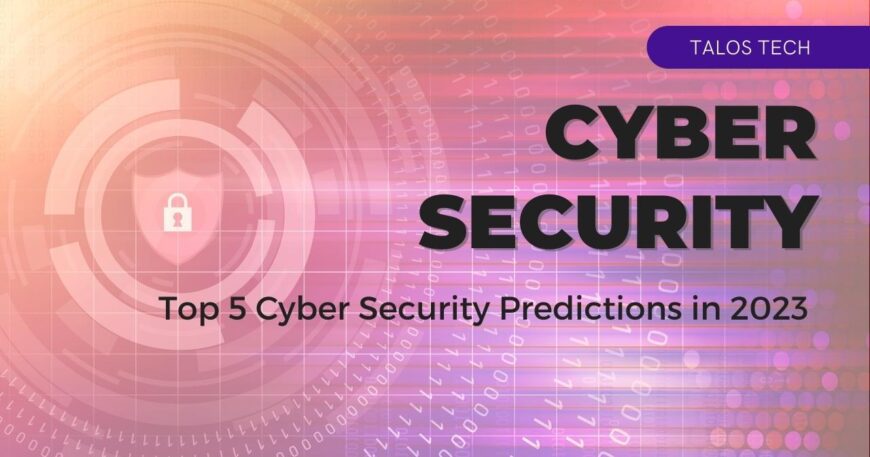Society is always attempting to predict the technological advancements of the future. The Jetsons, for example, depicted a future with flying cars and robot maids. However, predicting the future of cybersecurity is not just about making guesses or predictions, but rather about anticipating and preparing for potential threats and dangers. Those in the cybersecurity industry must constantly be on the lookout for what “bad actors” may be planning. To accurately forecast the future of cybersecurity it is important to consult reliable sources and utilize the expertise of seasoned professionals in the field. With the combination of years of experience and the resources of a successful cybersecurity services company, it is possible to accurately predict the developments and challenges that will arise in the coming year.
1. Zero Trust Adoption
According to various sources, the cybersecurity industry has not yet fully embraced the concept of Zero Trust principles. Despite the widespread adoption of Zero Trust integration by updated security platforms and tools, there seems to be a lack of understanding or adoption of these principles within the industry. We expect more organizations to adopt Zero Trust as a fundamental aspect of their cybersecurity strategy in the coming year. Zero Trust is not a one-size-fits-all solution to cybersecurity challenges, but it does play a crucial role in authenticating users and securing modern cloud infrastructure. We will likely integrate it increasingly into cybersecurity strategies moving forward.
2. Targeted Ransomware on the Rise
Ransomware attacks are a constant threat and can be easily found in the news on any given day. These attacks can occur in two ways: opportunistically or by targeting a specific person or organization. Targeted attacks tend to be more sophisticated and customized, and there have been reports of custom ransomware launched against specific technology stacks. Large, multi-national organizations are often the focus of these attacks, as they are unable to withstand a prolonged outage due to the nature of their services. To protect against ransomware, companies and municipalities must take a multi-faceted approach, including securing their environment, having a plan in place for recovery from a breach, and implementing ongoing measures for security and compliance.
3. Cyber Insurance and Cyber Regulations
Last year, we predicted that the cybersecurity insurance industry would undergo significant changes, and this has indeed come to pass. Cyber insurance companies have faced increasing costs for ransomware and incident recovery, leading to rising premiums. In response, new pre-policy cybersecurity compliance standards have become the norm in the industry. We also expect that regulations around ransomware payments will emerge in the coming year. This will likely result in additional reporting requirements, changes to cyber insurance policies, and the implementation of new pre-compliance standards. It comes to no surprise that the cyber insurance market will grow at a rate of 20.10% by 2028. We must actively advocate for effective legislation to support the cybersecurity industry as these initiatives are developed.
4. Insider Threat Arrests
It can be difficult to hold insiders accountable for cybercrimes, as it is often difficult to prove their involvement. However, we can expect to see more arrests and warrants issued for insiders who cause harm from within an organization. Insider threats, which can include corporate malice, espionage, social engineering, and other types of human access vulnerabilities, are a major concern for companies. Hackers are aware of these vulnerabilities and are increasingly targeting them, raising the stakes for organizations. To address insider threats, companies will need to adopt comprehensive security measures that include forensic data collection and strong consequences for malicious actors. However, dealing with the fact that many insider culprits operate in jurisdictions that may not be willing to prosecute cybercrimes, especially when dealing with the outsourced nature of the global tech industry, can complicate matters.
5. State Sponsored Attacks
Cyber warfare has become a highly effective and efficient tool in modern conflict. As we saw in 2022, the threat of cyber attacks is constant and can take many forms, including the theft of credentials, supply chain attacks, data breaches, and the loss of industrial secrets. It is important for nations to remain vigilant in proactively combating these evolving threats, as the number of nations involved in cyber warfare has made it a major focus of national security and can impact a nation’s preparedness for physical conflict.
Conclusion
As Rochelle Mueller says, “predicting the future of technology can sometimes be uncertain, but this is not the case when it comes to cybersecurity. It is crucial to be proactive in anticipating and preparing for potential cyber threats, as it is much easier to prevent an attack than to deal with the aftermath.” Her role with Talos Technologies has played crucial in in the past year providing security for organizations and government entities in Canada.
These predictions for 2023 serve as a guide for developing a security posture and readiness to counter cyber threats. As leaders in our industries, we must take responsibility for staying ahead of potential threats and equipping ourselves with the latest and most comprehensive security tools and practices. By keeping up with evolving advantages in the field, we will be prepared to face new challenges in the coming year.






